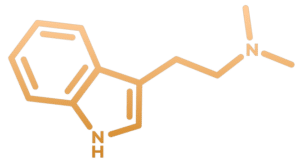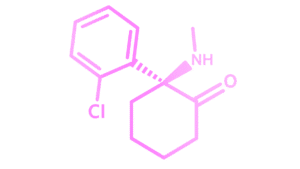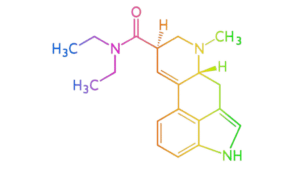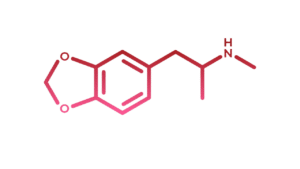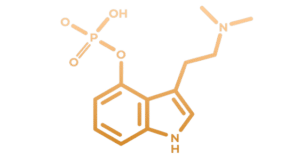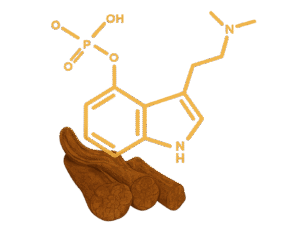Different types of psychedelics
There are different types of psychedelics, each with their own effects, intensity and application possibilities. We have a separate page per psychedelic with detailed explanations, so you can discover for yourself what the differences are between, for instance, ayahuasca, psilohuasca, psilocybin (truffles), LSD, MDMA, ketamine and psiloflora.
Because not every remedy is suitable for every situation or person, we are happy to help you make a choice. While completing the intake, together we look at your health, medication use, intentions and goals. Based on this, we can advise which psychedelic and which session form best suits your personal situation.
Information by psychedelic
For each psychedelic, see what its effects are, how people experience such an experience, how it can be used legally and in what ways people can use it therapeutically.
Frequently asked questions about psychedelics
Psychedelics are mind-altering substances that provide expanded perception, new perspectives and profound inner experiences. They have been used in rituals and spiritual contexts for thousands of years and have gained renewed interest in recent decades due to scientific research into their therapeutic effects.
Which psychedelic session is most often chosen?
The most frequently chosen psychedelic session at Triptherapie is the trufflesession. This session uses magic truffles containing psilocybin,a substance that has powerful consciousness-expanding effects and can provide deep insight into one's own thinking, feeling and actions.
Truffle sessions are popular because they are legal in the Netherlands, can be safely supervised and have profound therapeutic value. Many clients choose a truffle session because of the combination of spiritual experience, emotional processing and neurological effects such as increased neuroplasticity. In practice, it proves to be an accessible but effective form of psychedelic therapy, both for personal growth and for treating psychological complaints.
Psychedelics such as psilocybin, LSD and DMT affect the brain by binding to serotonin receptors, especially the 5HT2A receptor. These receptors play an important role in mood, perception and consciousness. This interaction temporarily creates a different way of processing information in the brain.
During a psychedelic experience, communication between different brain regions increases, while fixed networks such as the Default Mode Network - linked to self-reflection and brooding - become less active. This creates a state of increased neuroplasticity: the brain becomes more flexible in forming new connections and letting go of old patterns.
This unique brain state makes it possible to review deeply held beliefs, traumas or behaviours. In a safe and well-supervised setting, this can lead to insight, emotional processing and positive behavioural change. This is why psychedelics are increasingly used within the psychedelic therapy
The difference between a low and high dose of psychedelics is not only in the intensity of the experience, but also in the type of state of consciousness and therapeutic purpose. Low doses keep the senses sharper and keep one in touch with the outside world. This form is often used to improve mood, creativity or focus.
In contrast, a high dose leads to a deep inner journey where the ego may temporarily fade away. This can be accompanied by intense emotions, visual hallucinations and spiritual insights. High doses are mainly used for heavier themes such as trauma, depression or existential issues.
The choice depends on your experience with psychedelics, your mental state and your goals. Beginners often start with a medium dose, while experienced psychonauts opt for a higher or heroic dose. During the intake, we look together at what suits you best.
Good preparation includes an intake, setting an intention, healthy diet, avoiding alcohol and drugs. Further
General FAQ
Should you be looking for another question and answer? You can then also choose to use the search function on our site, consult the frequently asked questions section, ask a question via our forum or ask our chatbot Trippy.
Recent Q&A questions
Psychedelic session for clients from abroad
How do I book psychedelic therapy in the Netherlands when coming from abroad? What are the possibilities?
NPS law and MDMA analogues
Which analogues of MDMA will become illegal from 1 July 2025 with the entry into force of the amended opium law?
Psychedelic therapists
Which of the therapists at Triptherapie are trained psychologists and the like?
Truffle ceremony with psilocybin
Approximately how many truffles or mg of psilocybin do you get at magic truffle ceremonies?
Which psychedelic therapy?
What psychedelics do you use in psychedelic therapy and the ceremonies?
Psychedelic retreats
I am coming from abroad and want to attend a psychedelic retreat. What should I consider when organising my trip?
What does a tripsitter cost and where do they work?
What does a trip sitter in Amsterdam cost?
Can truffle therapy with a psychologist?
I want to do magic truffles under the supervision of a psychologist. Do you offer this or can I bring my own psychologist for during the truffle session?
No to little effect of truffles and MDMA
Why do I feel little effect from psychedelics like truffles and MDMA?
